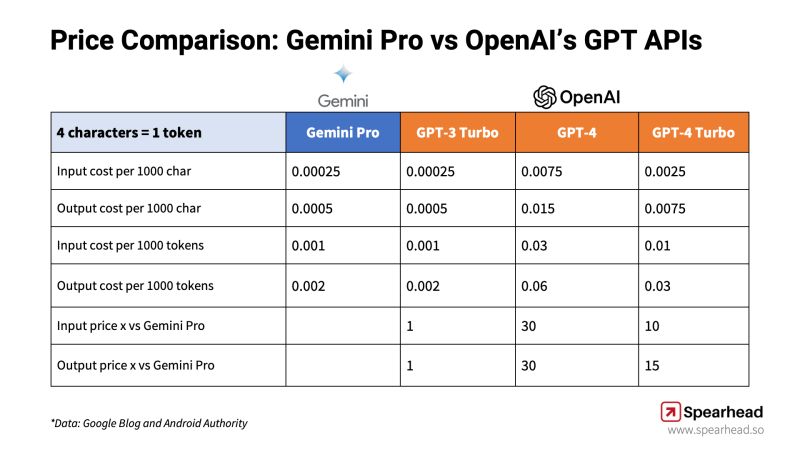Let the Generative AI pricing wars begin!
Google rolled out pricing for Gemini Pro, its latest large language model (LLM), to developers and enterprise customers with a freemium strategy and differentiated pricing meters.
Freemium Model: Open Access for Innovation
In a strategic push to drive widespread adoption, Google has made Gemini Pro available for free through Google AI Studio. The free version is limited to 60 queries per minute (QPM). Beyond this limit, Google has a paid model.
Paid Model: PAYG
When general availability commences, Gemini Pro will transition to a competitive pay-as-you-go pricing model. In stark contrast to GPT-4’s token system, Gemini Pro’s pricing structure is set to offer a significant cost advantage, potentially reshaping budget allocations and investment strategies in AI-driven projects.
Pricing Meters are different:
The pricing meters for Google and OpenAI are different. Google will charge by number of characters whereas OpenAI’s pricing model is based on tokens, where one token is about four characters.
A Closer Look at Pricing:
Through a simplified breakdown below, it becomes apparent that Gemini Pro offers a substantially lower cost, providing an attractive proposition for developers and enterprises alike.
Coming up next: Gemini Ultra
While Google’s pricing for the more robust Gemini Ultra remains under wraps, with an expected launch in early next year.
Bottom-line: With a freemium model and an aggressive pricing strategy, Google is positioning itself as a cost-effective alternative to OpenAI‘s GPT-4.
What are your thoughts on Generative AI pricing wars between Google and OpenAI?
#GenerativeAI #GeminiPro #GoogleAI #Developers #EnterpriseTech #pricingstrategy #openai

